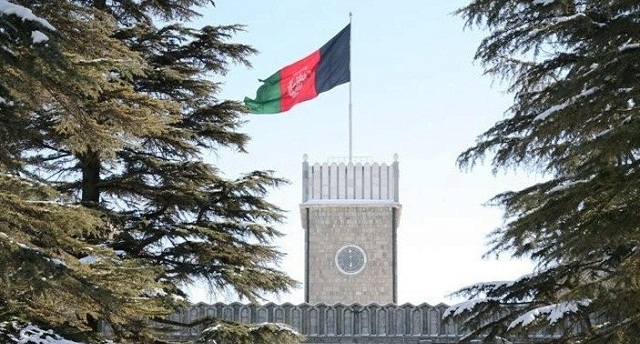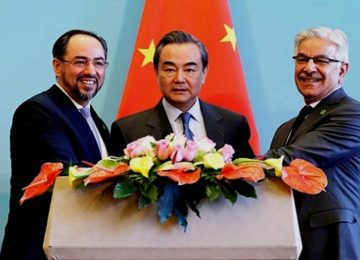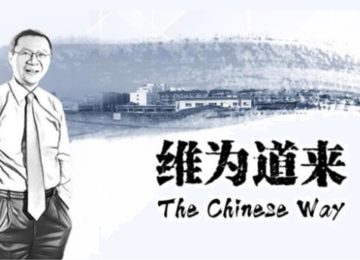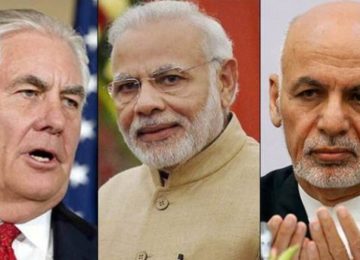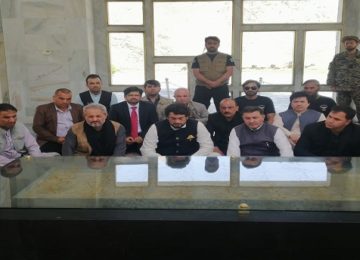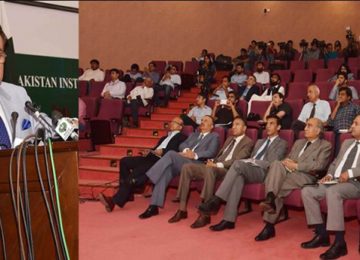The role of political parties in Afghanistan’s highly centralised presidential system, with only limited parliamentary checks and balances, is an important yardstick by which to measure how the country has fared in its attempts to democratise in the post-Taleban era. This new AAN thematic report, in cooperation with the German Konrad Adenauer Foundation (KAS), looks at the complex issue of political party development over the period of 2001 to 2016, following up on a first paper published in 2006 and the parties’ impact on the nominally democratic system. AAN co-director Thomas Ruttig, who has been researching Afghan political party history for over 35 years, concludes that the parties have remained peripheral to the political system and that this is one key reason why the system is not progressing toward a more democratic political practice. In this introductory dispatch, which also serves as a short overview over developments not covered in the paper, he adds that this has not changed in the run-up to the upcoming parliamentary elections where parties, once again, will not play a major role.
The years since 2001 constitute the longest period in Afghanistan’s history during which political parties have been able to operate openly. For the first time parties are fully legal. Despite many shortcomings, they have become a reality within the polity of present-day Afghanistan. In reference to the democratic periods of 1947-52 and 1963-73, the post-2001 periofd could be dubbed Afghanistan’s “third democratic period.” But much of the democratic potential, particularly embodied in the political parties as a reflection of the country’s political diversity, has remained unused or even blocked. This is another similarity with both the 1947-52 and 1963-73 periods.
Notably, the three ideologically different historical political currents (Islamists, leftists and ethno-nationalists) have proven relatively stable since 2006, although to differing degrees. This cannot be said (yet) for the two new currents, the new democratic parties that openly emerged immediately after 2001 and the neo-Islamist groups that later became more prominent – and not for most existing political parties. The void in the centre of the political spectrum – ie the lack of a moderate, pro-government or pro-reform party – remains glaringly unoccupied.
A high degree of fragmentation and a personality-oriented character complicates the landscape for Afghanistan’s political parties.
Afghanistan’s laws regarding political parties and their participation in elections are highly ambivalent. As a result, while Afghanistan’s political parties are a political and legal reality today (as well as historically, with the first parties having emerged in the late 1940s) and while this system is constitutionally designed as a multi-party democracy, the parties cannot openly compete for power.
This is particularly the case in the parliamentary elections, where candidates are free to identify themselves as members of a certain party (although many do not), parties as such are unable to play an official role. Most significantly, in the current electoral system, which is individual-based, parties cannot field lists of their candidates, there are no parliamentary seats reserved for political parties, as in other countries, and parties are not allowed to establish factions in parliament. The latter provisions, even more paradoxically, have never been laid down in any legislation, yet they are still adhered to.
This situation also limits the necessity for inter-party competition and for the individual parties to tie members, sympathisers and potential voters closer to them. The level of political maturity, organisational stability and the internal democratic nature of Afghanistan’s political parties, remains low.
Legally, the parties are inherent to the political system, but in practice they remain outside it, or at least relegated to the sidelines. Their strength has never been measured by full and unhindered participation in elections. This has prevented any ‘natural selection’ based on voter mobilisation or the number of votes received, that usually curbs the number of political parties – which is seen as excessive by many in Afghanistan. This is what the author calls a “paradoxical system.”
More paradoxically, while parties as such have no place in the system as a result of an election, some of their leaders hold a very prominent place, as individuals, in the parallel political system built during the Karzai years. (This might by less so the case under the current government.) This has relegated the parties – ie their members and sympathisers – to a position where they mainly serve as voter mobilisation machines during times of election, while, in between elections, they drift back into insignificance and hold no influence on their leaders’ politics. Additionally, this has led to the emergence of a two-class party system, with some parties (or rather their leaders) within this parallel system and all other parties outside of it.
Optimistically put, Afghanistan’s political party system is still a system in the making.
Some post-2016 developments
The upcoming parliamentary elections, scheduled now for 20 October 2018 (AAN analysis here), are already casting a shadow. Political parties’ positioning, alliance building and re-aligning has already started (see for example AAN’s analysis here, here and here).
Electoral reform, however, including the envisioned strengthening of the role of political parties, has not happened (AAN analysis here). A last ditch effort by a broad coalition of parties, including some usually close to President Ashraf Ghani (see AAN’s analysis here) has apparently been warded off. This was not too difficult, as the proposal came late and was contradictory, as it would have required a lengthy legislative procedure which, in turn, would have jeopardised the 20 October election date – that parties simultaneously insisted must be respected at all costs.
After the 2016 peace deal with the government, Hezb-e Islami and its leader Gulbuddin Hekmatyar returned to the country. Various wings and factions reunited, although one of them – that of former minister Abdul Hadi Arghandiwal – challenged that Hekmatyar could claim the party’s official registration (AAN analysis here) that was done under his name, leading to Arghandiwal’s expulsion by Hekmatyar (media reporting here).
After internal power struggles in the government, Jamiat-e Islami and Jombesh-e Melli Islami set up an opposition coalition, dubbed the ‘Ankara coalition’ by the public – while many of their leading figures still occupied government positions (AAN analysis here). Jombesh itself has been challenged by the launch of a New Jombesh (AAN analysis here). In Jamiat, a struggle is underway about who should be the permanent replacement for its assassinated leader Ustad Borhanuddin Rabbani (AAN analysis here).
Supporters of former President Hamed Karzai, who continues to harbour ambitions of a political comeback, formed a new political grouping but then distanced themselves somewhat from him again, following a series of controversial political statements (AAN analysis here). Afghan Mellat, one of the country’s oldest parties, split (media report here). Its long-term leader, former minister Anwar-ul-Haq Ahadi, joined hands with the former mujahedin party of Harakat-e Enqilab-e Eslami-e Afghanistan (Islamic Revolution Movement of Afghanistan) (AAN analysis here), in a New National Front (media report here). This alliance has come out as the most vocal group demanding an end to the NUG and a political system re-launch by a Loya Jirga.
On the left side of the spectrum, some politicians re-launched the Hezb-e Watan (Fatherland Party) (AAN analysis here). A party under the same name wasthe successorof the Soviet-backed Hezb-e Dimukratik-e Khalq-e Afghanistan (People’s Democratic Party of Afghanistan, PDPA), which ruled the country following a coup in 1978 and during the Soviet occupation (1979-89) and was revamped by President Najibullah in 1990 when he tried to shed its communist past (an AAN dossier here).
The on-going rift within the National Unity Government, embodied by the opposing positions of the president and Chief Executive Abdullah, over the implementation of the roll-out of an electronic ID card (AAN analysis here) that would double as a voter card has pushed Abdullah’s party, Jamiat, deeper into opposition.
Finally, President Ghani offered the Taleban a chance to participate in the upcoming elections as a political party (AAN analysis here) – which was promptly declined by the insurgents.
The Ministry of Justice (MoJ), unlike in 2009 and 2013/14, has refrained from unleashing another ‘re-registration’ exercise again, although there were hints it might do so in 2015 (media report here). But pressure on the parties has been kept up, particularly on the political party law’s stipulation that each party must have a clearly visible, separate office in all 24 provinces (and not only a rented backroom). This keeps a Sword of Damocles hanging over them, as almost none of them – not even the more affluent ones – has the financial or organisational capacity to adhere to this stipulation.
Afghanistan’s political parties will once again remain peripheral to the upcoming parliamentary elections. Although their number, ie those registered with the MoJ, has risen again to 74 (from 57 in mid-2016), there will be no seats reserved for parties in the lower house of parliament, the Wolesi Jirga, no political party lists of candidates and no party-based parliamentary groups or factions.
By Special Arrangement with AAN. Original link.
Disclaimer: Views expressed on this blog are not necessarily endorsed or supported by the Center for Research and Security Studies, Islamabad.



